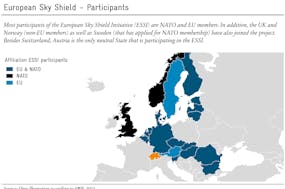There were various media reports about the cantons’ financial statements in the first year of Covid. The news that the cantons closed 2020 a good CHF 2 billion better than budgeted was met with some astonishment. A year later, amazingly, there was hardly any mention made in the press – even though the accumulated 2021 operating results of all 26 cantons were a whole 6.8 billion francs better than estimated.
No fewer than 22 cantons had budgeted for a deficit in 2021, but in the end only four of them actually ended up in the red, and 20 achieved (in some cases massive) surpluses. Instead of an accumulated deficit of CHF 3.9 billion, an accumulated surplus of CHF 2.9 billion was achieved.
The largest deviations – relative to the total revenues of the previous year – were in the cantons of Graubünden (18 percent), Zug (15.1 percent), Zurich (11.4 percent), and Schwyz (9.6 percent). The canton of Vaud came in more or less exactly on budget, just exceeding the break-even point rather than posting a deficit of CHF 164 million, a deviation corresponding to 1.6 percent of the previous year’s revenue. The only canton to come in precisely on budget was Fribourg, which planned for a surplus just over break-even and achieved this figure exactly.
Graubünden
As already mentioned, the canton of Graubünden topped the table with a deviation of 18 percent, or 446 million francs, from budget. What’s the explanation for this? More than half of the discrepancy results from the fact that budgeted transfers were much too pessimistic, with transfer income turning out 171 million francs higher than expected while transfer expenses remained 90 million francs behind the budgeted amount. Covid hardship contributions from the federal government, which were significantly larger than expected, were the main reason for the additional income. The canton’s share of withholding taxes and direct federal taxes also significantly exceeded the budgeted figures.
Graubünden did not expect a sixfold profit distribution from the Swiss National Bank (SNB) either. It budgeted for a fourfold distribution, meaning that the actual payout was underestimated by CHF 31 million. In addition, many budget credits were not utilized, the tax revenues of natural persons and legal entities were higher than expected, and fees and payments received were also much higher than budgeted (owing, for example, to the contributions paid by the federal government for Covid tests).
Zurich
The canton of Zurich gives a somewhat less explicit account of what was also a large deviation from budget. The most heavily populated canton alone put in an annual operating performance CHF 1.7 billion better than the budgeted amount (an actual surplus of CHF 758 million versus a budgeted deficit of CHF 926 million). Almost half of this was down to a miscalculation of the canton’s tax revenues, which were underestimated by CHF 843 million. The distribution of profits by the SNB falls under royalties and concessions. Zurich had only budgeted for two tranches even though it could have budgeted for four with a clear conscience – and in the end it actually turned out to be six. This alone accounts for a further 478 million Swiss francs.
Like Graubünden, Zurich massively underestimated transfer income, which came in no less than CHF 1.25 billion (or 26 percent) higher than budgeted. At the same time, however, actual transfer expenses in the canton of Zurich exceeded the budgeted figure by CHF 400 million. On balance the canton of Zurich achieved a surplus in 2021 for the sixth time in a row – usually contrary to forecasts.
GRAPH
Well-intentioned or a strategic ploy?
There are certain parallels between Graubünden and Zurich: both significantly underestimated tax revenues, SNB payments, Covid transfers, and other contributions paid to the canton by the federal government. Similar patterns are likely to be found – perhaps to a lesser extent – in the other cantons not examined in more detail. Some of this can be explained by the Covid effect: budgeting for 2021 occurred in the midst of the big second Covid wave of fall 2020, suggesting a certain degree of pessimism.
However, the fact that the cantons – quite similar to the federal government – are now once again posting significant surpluses instead of the deficits often budgeted for should also be grounds for a structural scrutiny of the budgeting process at this level of government. In itself it’s a good thing that the Swiss cantons budget conservatively. Abroad, where many states have mountains of debt reaching unimagined heights, one would not even dream of such discipline.
But clearly overly pessimistic budgeting on such a regular basis also has its downsides. Accurate budgeting would, for example, reveal potential for tax cuts; when it came to splitting up the burden between the federal government and the cantons, the cantons would find it harder to play the card of being the (financially) distressed party responsible for enforcement. The question therefore arises as to whether the cantons are budgeting overcautiously to the best of their knowledge and belief, or whether they’re doing it deliberately to avoid unnecessarily hampering their financial leeway in the current fiscal year. The latter would be a sign of laziness, which is not conducive to careful handling of taxpayers’ money.





